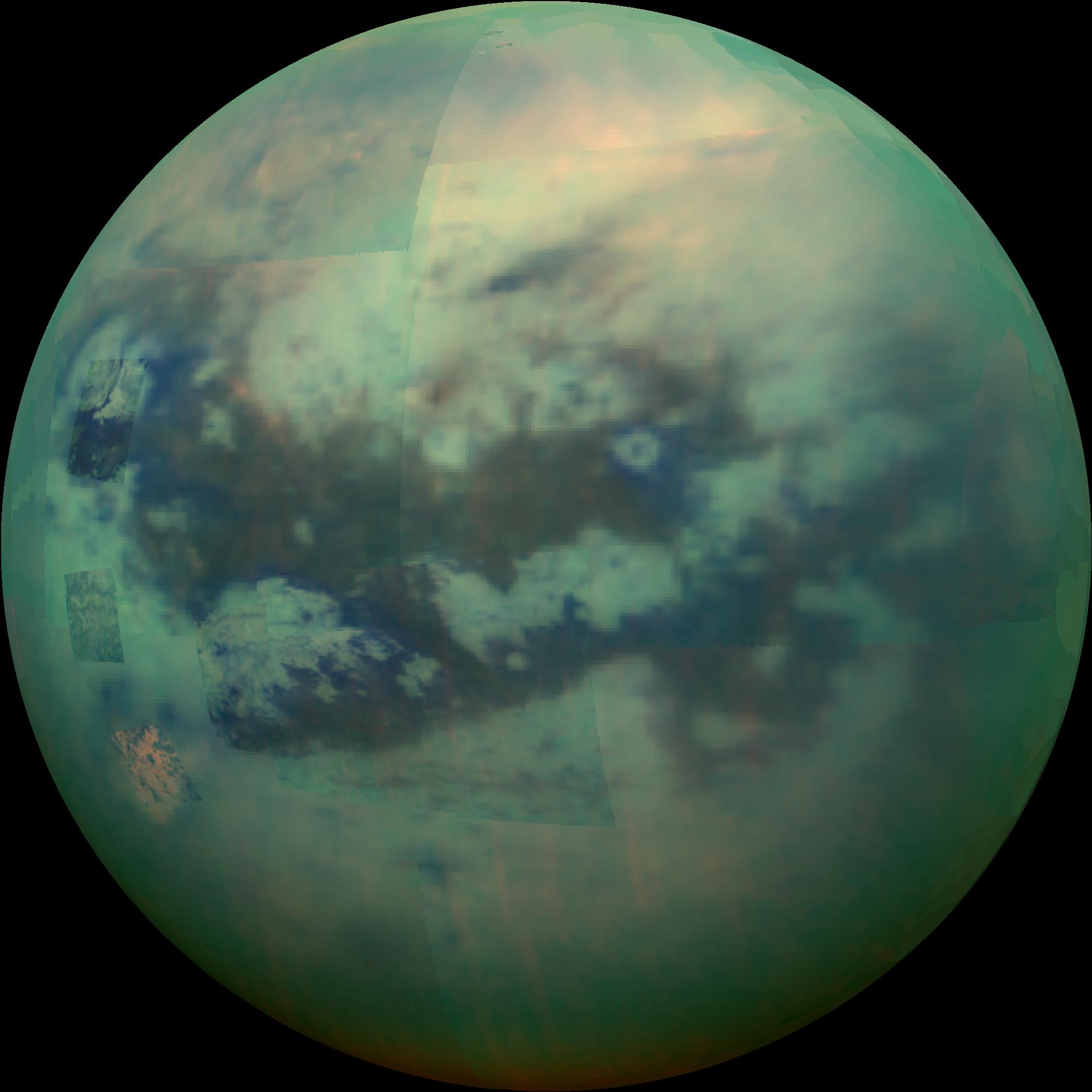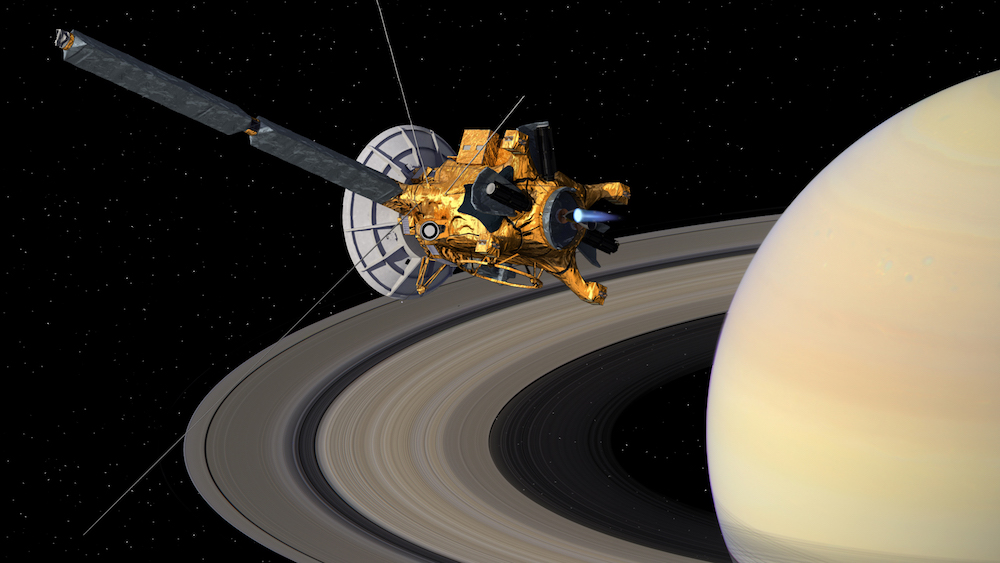Headlines: Inheritance of mitochondrial DNA. Coffee and Parkinson’s disease. Sending your name and a message to the New Horizons spacecraft. Winds on Mars. Water on Asteroids.
 Feature: Titan (starts at 8:55) The solar system has so many different worlds that come in all shapes and sizes and histories, from boiling hot Mercury and Venus to icy Pluto and the Kuiper belt. Such extreme alien worlds are exciting, but perhaps the places that catch our imaginations the most are the ones that are more familar – perhaps with the hope of humans one day visiting there and even living there. So we think of places that have atmospheres and have – or once had – liquid water. But then there are those places that live in what you might call “the uncanny valley” between familiar and alien, and perhaps Saturn’s moon Titan fits into that category, with an atmosphere (but not one that you would want to breathe) and lakes (but not ones you would want to swim in).
Feature: Titan (starts at 8:55) The solar system has so many different worlds that come in all shapes and sizes and histories, from boiling hot Mercury and Venus to icy Pluto and the Kuiper belt. Such extreme alien worlds are exciting, but perhaps the places that catch our imaginations the most are the ones that are more familar – perhaps with the hope of humans one day visiting there and even living there. So we think of places that have atmospheres and have – or once had – liquid water. But then there are those places that live in what you might call “the uncanny valley” between familiar and alien, and perhaps Saturn’s moon Titan fits into that category, with an atmosphere (but not one that you would want to breathe) and lakes (but not ones you would want to swim in).
Our guest today is Titan researcher Dr. Sarah Hörst, an Assistant Professor in the Department of Earth and Planetary Sciences at Johns Hopkins University, where she also is a member of the Hopkins Extreme Materials Institute. She is a Co-Investigator in the proposed Dragonfly mission to Titan. You can also follow her on Twitter as @PlanetDr.
Hosts: Joel Parker, Chip Grandits, Gretchen Wettstein
Producer and Engineer: Joel Parker
Executive Producer: Susan Moran
Contributor: Beth Bennett
Listen to the show here:
Podcast: Play in new window | Download (Duration: 27:06 — 24.8MB)
Subscribe: RSS





 The
The 
 With graduation season is upon us, or in many cases in the rearview mirror, today’s edition of How on Earth is the first of a two-part “Graduation Special”. Our guests in the studio today are scientists who recently graduated with – or soon will receive – their Ph.D. They talk about their thesis research, their grad school experiences, and what they have planned next.
With graduation season is upon us, or in many cases in the rearview mirror, today’s edition of How on Earth is the first of a two-part “Graduation Special”. Our guests in the studio today are scientists who recently graduated with – or soon will receive – their Ph.D. They talk about their thesis research, their grad school experiences, and what they have planned next. Morgan Rehnberg – CU Boulder,
Morgan Rehnberg – CU Boulder,  David Horvath – Colorado School of Mines,
David Horvath – Colorado School of Mines,  Joseph Lee – CU Boulder,
Joseph Lee – CU Boulder,